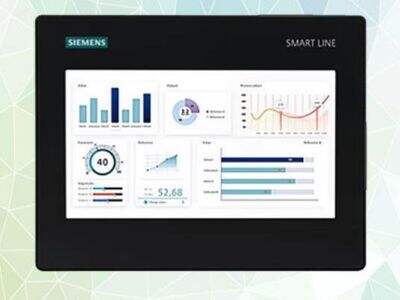Automatizacija - ključni koncept koji opisuje uporabu strojeva ili računalnih programa za obavljanje poslova koji su obično izvršavani od strane ljudi. Ova metoda je posebno važna u tvornicama gdje se proizvode artikli. Automatizacija u tvornici omogućuje proizvodnju artikala bržim tempom, te tvornici olakšava štednju velikog iznosa novca. Još jedan odličan način za poboljšanje automatizacije jest spajanje dviju tehnologija poznatih kao HMI i PLC. Dakle, pogledajmo kako ove dvije tehnologije rade ruku ob ruku, što olakšava operacije i automatizira svaki drugi zadatak koji obavljate!
Što su HMI i PLC?
HMI je sučelje između čovjeka i mašine (HMI). Dakle, smatrate HMI načinom na koji ljudi, poput radnika ili operatera, komuniciraju s mašinama i ih kontroliraju. Služi kao most između čovjeka i mašine. PLC — Svi ga znamo kao programabilnu logičku kontroleru. PLC se može zamisliti kao srce sustava za automatsko upravljanje. Odlučivanje ovisi o podacima koje dobiva. U tvornicama, zadaci mogu biti automatizirani kada HMI i PLC rade u suradnji. Iz ovog timskog rada potječe mnogo dobra prednosti.
Dakle, ovo ima dvije implikacije: Prva je da će ljudi morati raditi manje ručnog posla, što može biti oduševljivo. Druga je, zbog korištenja HMI i PLC zajedno, izbjegava se mogućnost ljudskih grešaka koje bi se mogle dogoditi ako bi svi procesi bili obavljani ručno. Jedna od najznačajnijih stvari za klijente je činjenica da ova kombinacija također povećava kvalitetu onoga što obradne zavode proizvode. Također smanjuje vrijeme potrebno za provjeru svih stavki, time brže čineći proizvodnju. Konačno, fleksibilnost tvornice se poboljšava integracijom HMI i PLC. To im omogućuje da budu agilni i prilagođuju se promjenama u potražnji potrošača ili novim trendovima unutar industrije.
HMI i PLC — Čini kontrolu učinkovitom i jednostavnom
Kontrolne operacije u tvornici su koraci koji se izvode na proizvod kako bi se dobio. To može imati različite oblike i malo biti složeno. Stoga treba tvornice pokušati napraviti ove kontrolne operacije upravljivijima, a to je trenutak kada postaje važno koristiti HMI i PLC zajedno. HMI daje radnicima brz, jednostavan pregled onoga što se događa u tvornici, omogućujući im da kontrolišu i praću mašine. Predstavlja ključne podatke u jasnom formatu koji omogućuje radnicima znati tačno koje akcije izvršiti.
Istovremeno, PLC se koristi za davanje logike i pravila za automatizaciju različitih koraka za izradu proizvoda. To omogućava mašinama da izvrše upute bez provjere s čovjekom za potvrdu. Korištenje HMI uz PLC može pojednostaviti način na koji tvornice vode svoje operacije. To također znači: Radnici ne moraju se angažirati u takve nevažne zadatke, što rezultira relativno efikasnijim radom, što implicira veću produktivnost.
Zašto je HMI i HMI s PLC važan za proizvodnju?
Proizvodnja je izrada predmeta iz sirovine. To općenito zahtjeva upotrebu teškog opreme, robotike i mnogo drugih vrsta hardvera. Nezavisne biljke bi bile vremenski potrošne, neefikasne i ekstremno skuplje bez automacije. I tu dolazi u sliku HMI i važnost integracije HMI i PLC. Kombinacija ovih tehnologija omogućuje tvornicama da automatiziraju svoje procese i trebaju znatno manje ljudske napore.
Kako spojiti HMI i PLC na pravi način za veću učinkovitost?
Drugo, poduzeća bi također trebala saznati koje su KPI-ji kojima žele pratiti. Od postizanja prodajnih ciljeva do zatvaranja poslova, KPI-ji su najpotrebnije mjere koje prate uspjeh poslovanja. To im omogućava odrediti što će podataka prikupljati i analizirati što pomaže u optimizaciji performansi. Na kraju, poduzeća moraju i obusmljeti zaposlenike kako koristiti ploča hmi i PLC sustav. S dobrom razumijevanjem rada sustava, zaposlenici mogu i optimizirati performanse te bolje otkazivati probleme kada se pojavljuju, smanjujući neaktivno vrijeme (vrijeme tijekom kojeg su strojevi neaktivan).
Integracija HMI i PLC u praksi
Integracija HMI i PLC je jedan od područja na kojem širok niz tvrtki uspješno kombinirao tehnologiju na optimalan način. HYST, ponuđač rješenja za industrijsku automaciju, postao je široko poznato ime koje pomaže raznim industrijskim grana da poboljše svoju učinkovitost, produktivnost i dobitnost.
 EN
EN
 AR
AR
 BG
BG
 HR
HR
 CS
CS
 DA
DA
 NL
NL
 FI
FI
 FR
FR
 DE
DE
 EL
EL
 HI
HI
 IT
IT
 JA
JA
 KO
KO
 NO
NO
 PL
PL
 PT
PT
 RO
RO
 RU
RU
 ES
ES
 SV
SV
 CA
CA
 TL
TL
 IW
IW
 ID
ID
 LV
LV
 LT
LT
 SR
SR
 SK
SK
 SL
SL
 UK
UK
 VI
VI
 SQ
SQ
 ET
ET
 GL
GL
 HU
HU
 MT
MT
 TH
TH
 TR
TR

%20(1)/images/share.png)
